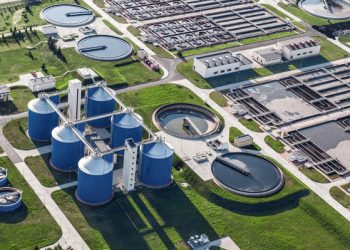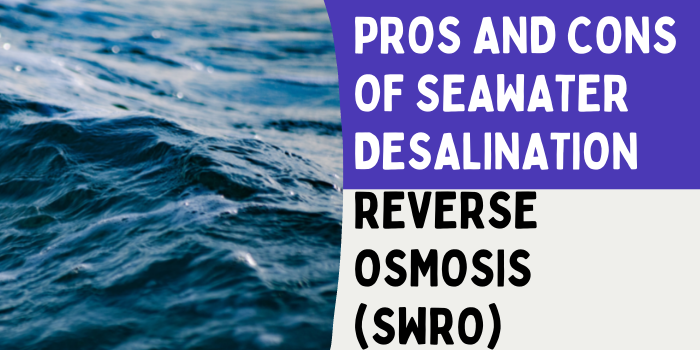Last updated on October 3rd, 2024 at 11:33 am
In the contemporary environmental landscape, wastewater treatment stands as a cornerstone of sustainable water management. The integration of advanced techniques like reverse osmosis and seawater desalination represents a significant advancement in this field, addressing the growing concerns of water scarcity and pollution.
The Critical Role of Reverse Osmosis in Wastewater Treatment
Principles of Reverse Osmosis
Reverse osmosis operates on the principle of using a semi-permeable membrane to filter out impurities from water. This process is paramount in purifying wastewater, rendering it suitable for a variety of applications, ranging from agricultural irrigation to industrial processes.
Benefits of Reverse Osmosis in Wastewater Treatment
- Efficient Contaminant Removal: Capable of eliminating diverse pollutants, including microorganisms, heavy metals, and chemical contaminants.
- Water Conservation: Facilitates water recycling, reducing the dependence on freshwater sources.
- Enhanced Water Quality: Ensures the production of high-purity water, meeting stringent quality standards.
Seawater Desalination: A Solution to Global Water Shortage
Seawater desalination emerges as a crucial technology in regions afflicted by freshwater scarcity. It involves extracting freshwater from seawater, thereby providing a reliable source of potable water.
Desalination Methods
- Thermal Desalination: Utilizes heat to evaporate seawater, condensing the vapor into freshwater.
- Membrane-Based Desalination: Employs reverse osmosis for efficient and cost-effective desalination.
Synergy of Reverse Osmosis and Seawater Desalination
Enhanced Water Treatment Efficacy
The combination of reverse osmosis with seawater desalination offers numerous advantages, including improved energy efficiency, increased water production rates, and diminished environmental impacts, particularly in terms of brine disposal.
Comprehensive Wastewater Treatment Process
From Inception to Reuse
- Initial Treatment: Screening and grit removal.
- Primary Phase: Organic solid separation in settling tanks.
- Biological Treatment: Microbial degradation of organic content.
- Reverse Osmosis Stage: High-efficiency filtration for fine contaminants.
- Desalination (if applicable):Removal of salts and minerals.
- Advanced Tertiary Processes: Further purification, including UV disinfection.
- Final Steps: Safe discharge or repurposing in various sectors.
Environmental and Public Health Impacts
Sustainable Practices and Benefits
- Reduced reliance on chemical treatments in both RO and desalination.
- Implementation of energy-efficient systems, potentially powered by renewable sources.
- Alleviation of water scarcity through effective desalination techniques.
Public Health Enhancements
- Provision of consistently safe, clean water.
- Preservation and protection of natural ecosystems.
- Prevention of waterborne diseases, ensuring community health and well-being.
Read: A Cornerstone Technology in The Quest For Pristine Water Quality
The Future Landscape of Wastewater Treatment
Embracing Innovation and Efficiency
Future advancements in wastewater treatment are anticipated to focus on optimizing energy consumption, increasing water recovery rates, and reducing ecological footprints. Innovations may include the development of more efficient membrane materials for reverse osmosis, the integration of renewable energy sources, and the exploration of new desalination technologies.
Advanced Wastewater Treatment Technologies
Cutting-Edge Developments
- Nanofiltration: An extension of reverse osmosis, utilizing nanotechnology for even finer filtration, targeting specific contaminants.
- Electrodialysis Reversal (EDR):A process complementary to RO, using electric fields to separate charged particles, ideal for varying salinity levels.
- Zero Liquid Discharge (ZLD) Systems: Aim to eliminate wastewater discharge entirely, recovering valuable resources and minimizing environmental impact.
Community and Industry Applications
Diverse Utilization of Treated Water
- Agricultural Irrigation: Using treated wastewater for irrigation, especially in arid regions.
- Industrial Applications: Employing high-purity water in processes such as manufacturing and cooling.
- Urban Landscaping and Recreational Use: Utilizing treated water for municipal landscaping, reducing the demand on potable water sources.
Global Impact and Policy Implications
Worldwide Significance
The application of advanced wastewater treatment technologies, especially reverse osmosis and seawater desalination, is increasingly recognized globally as essential for sustainable water management. This recognition is driving policy changes and investments in water infrastructure across various regions.
Policy and Regulation
- Standards and Guidelines: Establishing stringent regulations for water quality and treatment processes.
- Incentives for Sustainable Practices: Encouraging the adoption of efficient and eco-friendly water treatment technologies.
- International Collaboration: Sharing knowledge and resources to address global water challenges.
Read: Common Mistakes to Avoid in Water Purification: Precautions to Take
Conclusion
The advancement of wastewater treatment through reverse osmosis and seawater desalination is pivotal in tackling the dual challenges of water scarcity and environmental sustainability. As we continue to innovate and implement these technologies, we pave the way for a future where clean, safe water is accessible for all, ensuring a healthier planet for generations to come.











